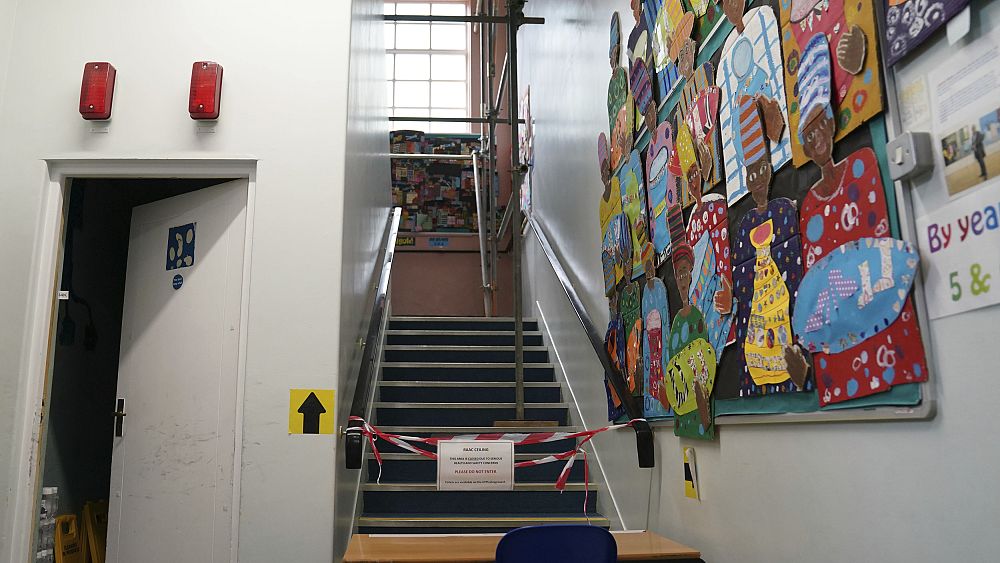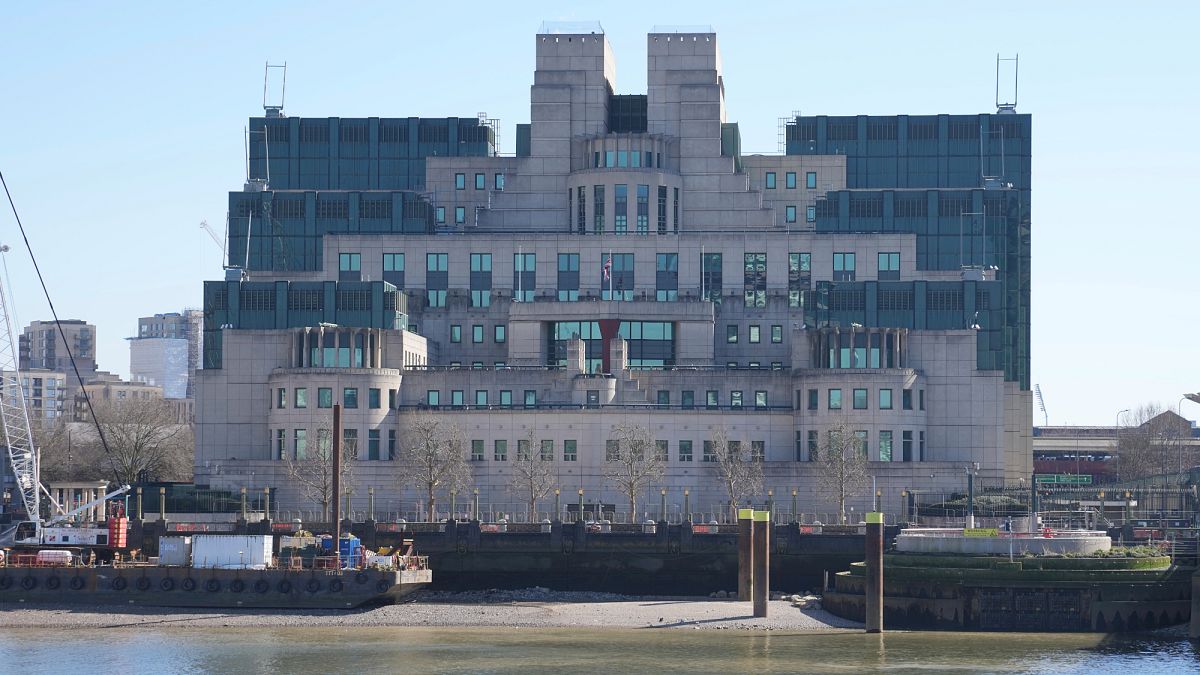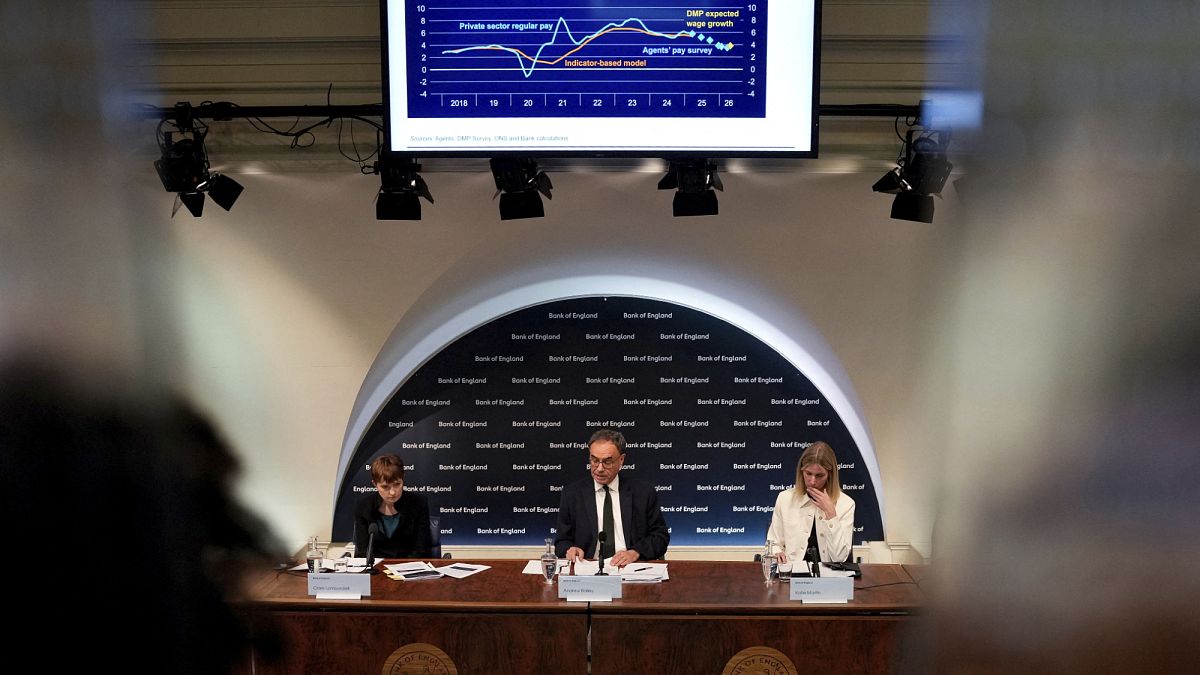UK concrete crisis: What is RAAC and why is it ‘crumbling’?

As schools across the country are forced to partially close and London airports confirm their buildings have RAAC, Euronews takes a look at the impact RAAC has and will have going forward.
It hasn’t been a normal ‘back to school’ for many pupils in the United Kingdom this September.
More than 150 schools in the nation have been forced to close – fully or partially – thanks to the fact that they are fitted with a type of concrete which could suddenly collapse.
Reinforced autoclaved aerated concrete – otherwise known as RAAC – is a lightweight building material which was used from the 1950s up to the mid-1990s in the UK and across the globe.
Recently, it has been assessed to be at risk of collapse and is not just present in schools, but also in hospitals, airports, housing blocks, theatres and other public buildings.
The British government has attracted huge amounts of criticism due to their handling of the situation and ministers in England and Scotland have been accused of covering up evidence relating to the severity of the problem for months.
Earlier this week, UK Education Secretary Gillian Keegan was forced to apologise after making “off-the-cuff” remarks on camera while expressing frustration about the crumbling concrete crisis in schools.
“Does anyone ever say ’you know what you’ve done a f***ing good job because everyone else has sat on their arse and done nothing?′”, Keegan said at the end of an interview with broadcaster ITV.
Before the controversy about RAAC – and the much-maligned government’s reaction – came to the forefront, a report by the UK’s spending watchdog, the National Audit Office (NAO), had highlighted the cost and complexity involved in dealing with the problem.
The government has since committed to completely rebuilding seven “structurally unsound” hospitals built with RAAC but parents and political opponents alike are in uproar following parliament’s response, with some saying it was “too slow” and “doesn’t go far enough”.
If you’re finding it hard to get your head around the controversy surrounding RAAC as well as the sheer scale of the problem, Euronews is here to help, with the assistance of some construction experts.
What is RAAC?
RAAC is known as a less durable form of concrete, with a lifespan of around 30 years. It’s prone to collapse when it gets wet. Remarkably, concerns about its structural integrity were first raised by researchers nearly 30 years ago, back in 1994.
Manufacturing in the UK stopped in the 1980s and, although it’s not entirely clear why it was brought to an end, researchers believed that the material could be prone to problems.
“Due to its lightweight, RAAC planks were commonly used for flat roofing, which is a primary reason the present circumstances are perilous. In the 1990s, even as RAAC was still in use, structural engineers found that its durability wasn’t enduring over the years” Stuart Bosley, managing director of Quantum and Project Advisory at DeSimone Consulting Engineers, toldEuronews.
“As RAAC ages, it can weaken, increasing the risk of structural collapses. Its initial popularity stemmed from its lightweight, ease of installation and affordability. At its height of use, it was viewed as a cutting-edge and efficient building material”, Bosley added.
Where was RAAC used?
Contrary to some current reports, RAAC wasn’t just used in the UK.
It was also very popular in countries including Ireland, Australia, New Zealand and South Africa from the 1950s up to the 1980s.
Experts said it was very unlikely that RAAC manufactured in countries other than the UK would be able to avoid similar problems.
“RAAC was used in various parts of Europe, but the extent to which each country or region adopted it would vary”, Stuart Bosley explained.
“[Other collapses in Europe] might raise questions about the usage of RAAC or similar materials in other European structures. However, it’s essential to investigate each incident individually to determine the exact causes”, he adds.
How dangerous is RAAC?
“RAAC has a shorter service life due to its inherent properties. Its high volume of pores makes it less reliable for structural purposes”, Andrew Coombe, managing director at My Build My Way told Euronews.
“Larger RAAC units are particularly prone to sudden cracking, which can be catastrophic in load-bearing elements, and a collapse can happen with no warning”, Coome added, “As a porous structure RAAC is vulnerable to moisture, chloride, and carbon dioxide, which can lead to the corrosion of steel bars or welded wire fabric which act as reinforcement agents within the concrete”.
While it’s not entirely clear exactly how many buildings contain RAAC, Stuart Bosley explained that it was absolutely crucial they are all checked to ensure the safety of people inside and nearby.
“Any structure built with RAAC during its popular usage period should be assessed for potential risks”, he said.
The present issue dates back to at least 2018 in the UK, when part of the roof collapsed at Singlewell Primary School in Gravesend, Kent. RAAC was linked to the collapse of the roof and although no one was hurt, government opponents say the Conservatives should have moved significantly faster after that incident.
Where did the concerns around RAAC come from?
While you likely may not have heard of RAAC until 2023, the root of the problem actually goes back decades.
In fact, some issues with the material have been known about for around forty years.
As early as the 1980s, there were roof collapses reported in multiple buildings, due to decades of corrosion. Some required demolitions and many were found not to contain adequate steel reinforcements.
In the late 1990s and early 2000s, the Building Research Establishment (BRE) published research papers which found that excessive deflections and cracking had been identified in a number of RAAC roof planks and highlighted “excessive” issues in a significant number of older buildings using the material.
In 2019, the Standing Committee on Structural Safety issued an alert about the collapse to government departments as well as hospitals, churches, building professionals and local authorities in charge of schools. They wanted that “pre-1980 RAAC planks are now past their expected service life and it is recommended that consideration is given to their replacement”.
This event, and others, prompted the Department for Education (DfE) to release safety guidelines on RAAC. There were holds up, apparently due to insufficient funding and COVID-19-related delays up until February of this year, when seven education unions demanded urgent action over the “shocking state” of school buildings at the risk of collapse.
At the time, union bosses said the situation had “reached rock bottom”. In June, four schools in Essex and the North East of England were forced to close due to the presence of RAAC in their ceilings. Pupils affected were taught remotely or at alternative, safe sites.
What’s next for preventing any RAAC-based catastrophes?
It has certainly been a trying time for those who have been informed that their buildings contain RAAC.
Some school pupils are being told they will have to take pandemic-style remote lessons, while other heads of schools have been frantically searching to find temporary facilities.
Around 14 hospitals, constructed “either wholly or in major part with RAAC”, have been ruled as dangerous, with seven of them considered “critical” and not fit for purpose beyond 2030.
As we approach the colder months, the National Risk Register has warned of the threat to schools from “low temperatures” and “heavy snowfall” which could pose a “significant threat to human welfare”.
Opposition leader Sir Keir Starmer has blamed the crumbling concrete crisis on the government “cutting corners” and “sticking plaster politics”, joining industry experts in that sentiment.
“One could argue that the government might have taken more rigorous steps to determine the actual risk extent”, Stuart Bosley told Euronews. He added, “Given that these concerns have persisted for over a decade, a well-orchestrated risk management approach could have potentially prevented this widespread dilemma”.
A government spokesperson has refuted claims of wrongdoing, saying ministers had acted “decisively” to tackle the RAAC scandal. The DfE has called for schools to proactively check for RAAC in their buildings and say they will offer funding so that expert guidance can be called in.
Some have questioned whether this goes far enough – or whether it’s simply too little too late.
“Upon identifying any wear and tear, schools should promptly establish safety measures, including sectioning off compromised areas”, Bosley explained. “It’s essential to update evacuation procedures, emphasising safeguards against possible structural emergencies”.
Source: Euro News















